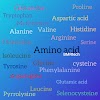Serine Amino Acid | Introduction | Chemical Properties | Biosynthesis and Function...
SERINE AMINO ACID

Introduction-
Serine is an non-essential amino acid. Serine contains ɑ-amino acid that is used in the biosynthesis of proteins. It contains an α-amino group and carboxyl group. A side chain consisting of a hydroxymethyl group, classifying it as a polar amino acid. It can be synthesized in the human body under normal physiological circumstances, making it a nonessential amino acid. It is encoded by the codons UCU, UCC, UCA, UCG, AGU and AGC.
Properties-
Molar mass: 105.09 g/mol
Solubility in water: soluble
Acidity (pKa): 2.21 (carboxyl), 9.15 (amino)
Melting point: 246 °C (475 °F; 519 K) decomposes
Structure and properties: Refractive index (n), Dielectric constant (εr),
etc
3D model (JSmol): Interactive image; Zwitterion: Interactive image.
Structure-
Sources-
Biosynthesis-
The biosynthesis of serine starts with the oxidation of 3-phosphoglycerate to 3-phosphohydroxypyruvate and NADH by phosphoglycerate
dehydrogenase (EC 1.1.1.95). Reductive amination (transamination)
of this ketone by phosphoserine transaminase (EC 2.6.1.52) yields 3-phosphoserine (O-phosphoserine)
which is hydrolyzed to serine by phosphoserine phosphatase (EC 3.1.3.3).
Function-
Serine is important in metabolism in that it participates in the biosynthesis of purines
and pyrimidines.
It is
also the precursor to numerous other metabolites, including sphingolipids and folate,
which is the principal donor of one-carbon fragments in biosynthesis.
Serine plays an important role in the catalytic function of many enzymes.
SUBSCRIBE FOR MORE INFORMATION........!






0 Comments